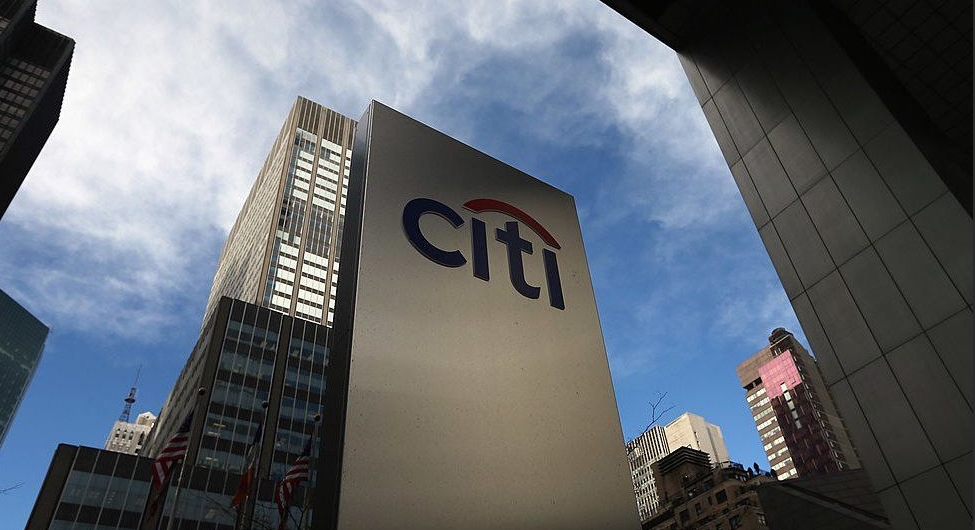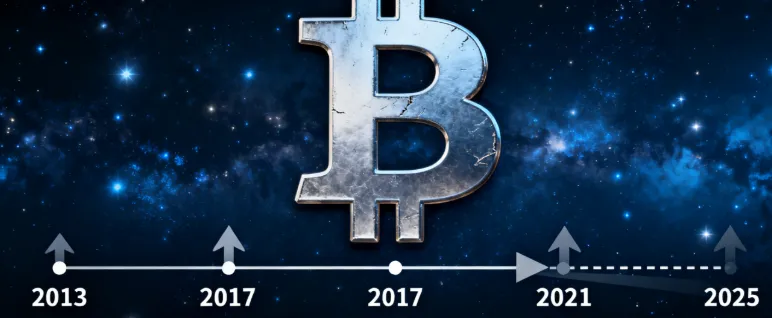Author: Liang Yu
Editor: Zhao Yidan
According to a report by Sina Finance on November 21, Citibank and the financial messaging organization Swift have achieved synchronized settlement of fiat and digital currencies for the first time in a payment versus payment (PvP) process. This experiment, conducted on the Ethereum Sepolia testnet, is like a stone thrown into the lake of traditional finance, creating ripples that are spreading to every corner of global trade, asset tokenization, and central bank currency competition.
The significance of this experiment lies in its achievement of synchronized settlement between traditional fiat currencies and digital currencies within the payment versus payment (PvP) workflow for the first time. This means that the on-chain transfer of digital assets and the off-chain transfer of traditional fiat currencies involved in a transaction can be completed simultaneously under an atomic and instantaneous mechanism, effectively eliminating the settlement risks that have long plagued cross-border finance.

1. Cracks in the Iron Curtain: The Eve of Reshaping the Global Settlement Landscape
As the Federal Reserve's FedNow system reduces domestic settlements to seconds, as China's cross-border payment network covers 138 countries, and as the Bank for International Settlements' multilateral central bank digital currency bridge project involves 21 central banks, the iron curtain of traditional cross-border payments is showing cracks. This experiment led by Citibank and Swift occurs at a critical juncture in the multipolar competition of the global settlement system.
"This is not a technological race, but a redefinition of infrastructure dominance," pointed out an anonymous expert involved in the BIS unified ledger project. This pressure forces Swift to seek new technological breakthroughs. Citibank's choice is also filled with strategic considerations—compared to JPMorgan Chase's focus on the private chain JPM Coin system, Citibank has insisted on exploring public chain-compatible solutions since the start of its regulated liability network experiment in 2023. This difference reflects the fundamental divergence in the business focus of the two banks: Citibank's multinational corporate clients need cross-chain settlement capabilities rather than efficiency optimization within a closed network.
The competition for global payment infrastructure is accelerating. The cross-border tokenization project in collaboration with the Hong Kong Monetary Authority, the Central Bank of Brazil, and the Bank of Thailand explores the application of central bank digital currencies in cross-border PvP and DvP settlements. These projects resonate with the Citibank-Swift experiment, collectively pushing cross-border settlements towards greater efficiency and security.
2. The Hestaton Ghost: How Atomic Settlement Reshapes Financial Trust
Hestaton risk—a financial term named after a German bank that collapsed in 1974—has always been the most dangerous ghost in the field of cross-border payments. In the traditional correspondent banking model, the lack of synchronization in settlements due to time zone and system differences has cost several international banks billions of dollars.
The brilliance of this experiment lies in its reconstruction of the trust mechanism using smart contracts. As soon as the fiat payment instruction is initiated in the traditional system, the Swift coordinator immediately locks the on-chain assets, forming an irreversible transaction commitment. This architecture not only addresses the risks of cross-time zone settlements but also significantly reduces the capital occupation in cross-border settlements—industry estimates suggest this could mean hundreds of millions of dollars in annual capital release for multinational corporations. The custody locking mechanism used in the experiment ensures that fiat transfers and on-chain transactions are completed simultaneously, completely eliminating counterparty risk.

"We are not rebuilding the system; we are connecting the world," explained Swift's innovation director at the 2025 Singapore FinTech Festival regarding their blockchain connector design. This solution allows financial institutions to enjoy the certainty of on-chain settlements without directly managing blockchain nodes or private keys. This incremental path complements the BIS's advocacy for a "unified ledger" concept: one extending from existing systems and the other starting from an ideal architecture, both pointing towards a future of integrated financial infrastructure.
3. The Last Mile: The Battle for Global Liquidity of RWAs
The rapid growth of the tokenized U.S. Treasury market highlights the potential of the RWA (real-world assets) ecosystem. However, bottlenecks in cross-border transaction processes have constrained its further development. The synchronized settlement architecture validated by Citibank and Swift provides a key solution for the cross-border circulation of RWAs.
Through the atomic settlement mechanism, cross-border transactions of tokenized government bonds can flow as smoothly as local transfers: euros from European buyers and tokenized assets from Asian sellers are exchanged simultaneously under the guarantee of smart contracts. This capability not only reduces settlement risks but, more importantly, provides a compliant path for RWAs that aligns with global regulatory frameworks—all transaction records are retained in both traditional audit systems and distributed ledgers, meeting multi-jurisdictional regulatory requirements.
However, concerns remain. The European Union requires strict monitoring of on-chain transactions under the crypto asset market regulation law, and the U.S. Securities and Exchange Commission has yet to clarify the cross-border settlement rules for tokenized securities. More complex is the fact that the China Securities Regulatory Commission has issued "informal guidance" to some mainland brokers, requesting a pause on RWA-related tokenization business in Hong Kong. This highlights the gray areas in the legal framework surrounding RWA business, including asset rights confirmation and cross-border data compliance challenges.
Institutions like Velo Protocol are exploring paths to address these challenges. Their developed Orbit Plus super application integrates real-time settlement functions between tokenized assets, stablecoins, and fiat currencies, aiming to provide a unified entry point for the RWA ecosystem. This initiative starts in the Southeast Asia "Belt and Road" corridor, aiming to release liquidity for long-illiquid assets and broaden global investor participation.
4. The Maze of Rules: The Moment for Global Regulatory Coordination
After the successful news of the experiment, the Monetary Authority of Singapore promptly updated its guidelines for digital payment token service providers, adding compliance requirements for cross-chain settlements. This rapid response confirms the general mindset of regulatory agencies: they both anticipate the efficiency gains brought by innovation and worry about the transmission of systemic risks.
In March 2025, the International Monetary Fund (IMF) released the seventh edition of the "Balance of Payments Manual," which for the first time included cryptocurrencies and other digital assets in the global economic reporting framework. This classification framework provides important guidance for regulatory agencies to clarify the nature of different crypto assets, aiding in the targeted formulation of regulatory policies. According to the IMF's new framework, digital assets are categorized into fungible tokens and non-fungible tokens, and further classified based on whether they carry related liabilities.
International organizations such as the Financial Stability Board (FSB) are also actively constructing an international regulatory framework for crypto assets. In July 2023, the FSB released high-level regulatory recommendations for crypto assets and "global stablecoins," proposing principles such as "same business, same risk, same regulation," aimed at enhancing global regulatory consistency and reducing regulatory gaps.

Technological barriers should not be underestimated either. Although Ethereum has significantly increased its theoretical throughput through the latest upgrades, congestion events on public chains can still lead to abnormal spikes in transaction fees. According to industry technical analysis, production environments require more robust architectures than testnets, and many institutions are currently evaluating multiple Layer 2 solutions, but interoperability standards have yet to be unified.
Deeper challenges lie in the integration of concepts. Swift's network is essentially a multi-hop architecture based on trusted intermediaries, while the core spirit of blockchain is direct value transfer on a peer-to-peer basis. Banks wish to retain dominance over asset custody, while crypto-native users pursue self-custody and programmability of assets. These structural contradictions suggest that future financial infrastructure is more likely to be a hybrid, complex ecosystem.
5. Future Vision: The Dawn of a Hybrid Financial Ecosystem
As we stand at the end of 2025, the evolution path of financial infrastructure has gradually become clear. In the short term, Swift plans to upgrade its blockchain connector into a standardized product. Meanwhile, the International Organization for Standardization is developing financial application standards for distributed ledger technology, which is expected to provide unified specifications for cross-chain settlements.
Mid-term evolution will focus on the integration of central bank digital currencies. According to the Bank for International Settlements' 2025 report, over 70% of central banks have adopted interoperable architectures in their CBDC designs. This integration occurs not only at the technical level but also in regulatory coordination—major central banks, including the Federal Reserve, the European Central Bank, and the Bank of Japan, are establishing regulatory sandbox mechanisms for CBDC cross-border settlements.
The collaboration project between the Hong Kong Monetary Authority and the Central Bank of Brazil demonstrates the potential of CBDCs in cross-border settlements. The two parties are connecting experimental central bank digital currency infrastructures to explore use cases for cross-border PvP and DvP settlements in trade financing and voluntary emission reductions. This collaborative model provides important references for central banks in other regions.
In the long term, this experiment may give rise to a new type of financial ecosystem. At the base are diversified asset issuance networks, in the middle are specialized settlement channels, and at the top is the ultimate settlement guarantee of central bank currencies. In this system, users can achieve frictionless circulation of any asset without needing to understand the technical details.
This evolution process will reconstruct the currency service model of the internet, endowing it with programmability, composability, and native digital attributes. With the implementation of Hong Kong's "Stablecoin Regulation," the application of stablecoins in cross-border payments and the RWA field will further expand, creating new possibilities for the integration of traditional finance and decentralized finance.
6. Building the Future Together: The Path of Global Collaboration and Standardization
The success of the Citibank and Swift experiment highlights the key role of global collaboration in driving financial innovation. Institutions like the Bank for International Settlements (BIS) are actively promoting the standardization and interoperability of cross-border payments. The BIS has developed a blueprint to support the global unified ledger for central bank digital currencies and tokenized assets, exploring various application cases for incorporating smart contract innovations into unified ledger design.
The IMF's new regulations provide a unified framework for global crypto asset regulation. According to the IMF's plan, widespread adoption of BPM7 and the latest national accounts system will be promoted by 2029-2030. This initiative helps countries reach a consensus on cryptocurrency regulation, reducing regulatory differences and arbitrage opportunities.
Global regulatory coordination still faces challenges. There are significant differences in regulatory attitudes towards crypto assets across different jurisdictions, complicating cross-border settlements. In the future, further strengthening international collaboration through information sharing and joint law enforcement will be necessary to jointly address cross-border cryptocurrency crimes and financial risks.
When asked about the significance of the experiment, the CEO of Swift responded meaningfully at a press conference: "We are not predicting the future; we are building a bridge to the future." This statement may reveal the essence of the transformation of the global financial system—balancing stability and embracing innovation, where incremental reforms often prove more vital than radical revolutions.
If, as the General Manager of the Bank for International Settlements said, "the future monetary system will be hybrid," then the Citibank and Swift experiment may very well be the key pivot that brings prophecy into reality. With the improvement of technical standards and the coordination of regulatory frameworks, this initially validated settlement channel is expected to become an important bridge connecting traditional finance and the world of digital assets, opening a new chapter for global trade and capital flows.
Some sources of information:
· "Citibank and Swift Complete Pilot for Fiat and Digital Currency PvP Settlement Process"
· "Velo Protocol Releases Orbit Plus Super Application to Support Real-World Asset Tokenization"
· "Citibank and Swift Test Successfully: Fiat and Stablecoins Can Be Directly Converted"
· "Hong Kong Monetary Authority and Central Bank of Brazil Collaborate on Cross-Border Tokenization Project"
免责声明:本文章仅代表作者个人观点,不代表本平台的立场和观点。本文章仅供信息分享,不构成对任何人的任何投资建议。用户与作者之间的任何争议,与本平台无关。如网页中刊载的文章或图片涉及侵权,请提供相关的权利证明和身份证明发送邮件到support@aicoin.com,本平台相关工作人员将会进行核查。




